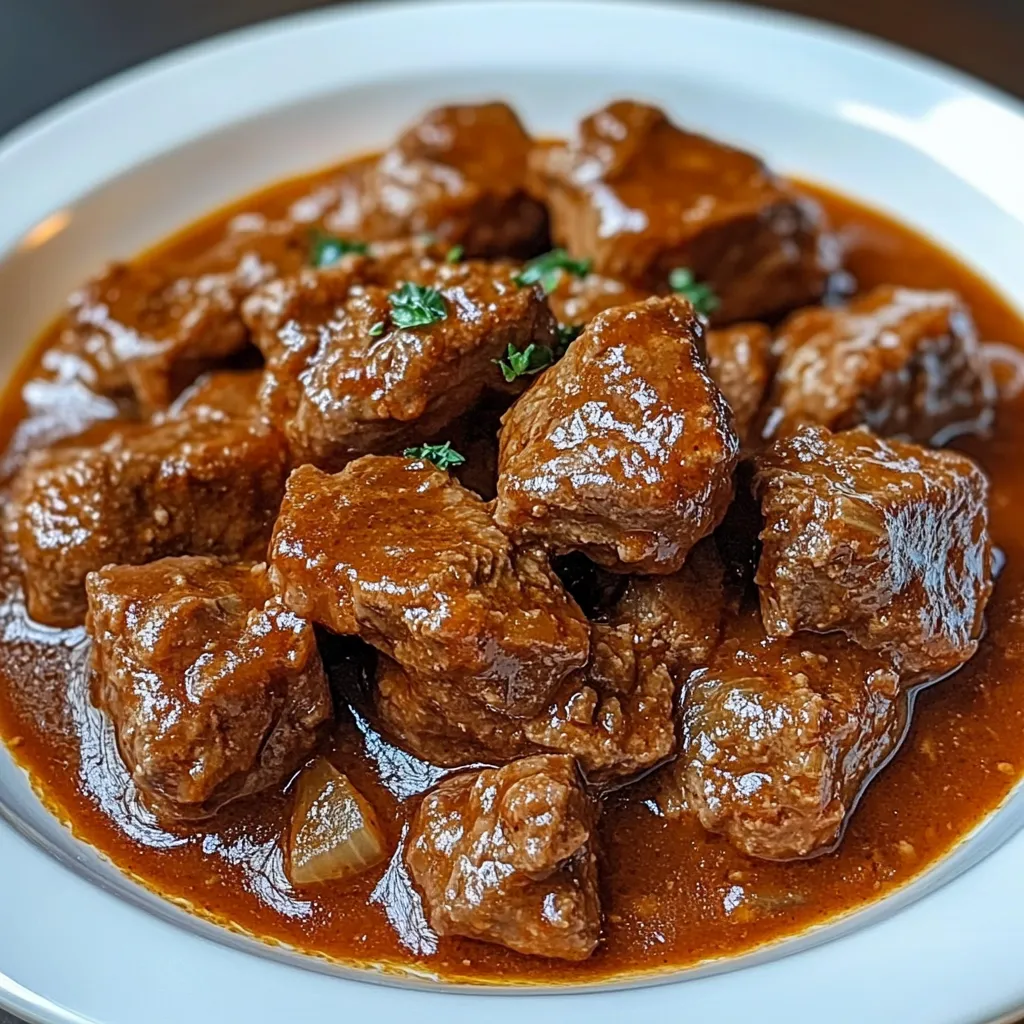A Hearty Dish That Feels Like Home
Few things can match the comfort of a warm, homemade beef stew simmering on the stove. The smell alone—rich beef, caramelized onions, and savory herbs—can make anyone feel instantly cozy. This simple recipe turns everyday ingredients into a deeply flavorful, slow-cooked dish that’s perfect for a Sunday dinner or a chilly evening.
What You’ll Need to Make This Rich, Savory Stew
This recipe uses affordable, easy-to-find ingredients, yet the result tastes like something straight out of a family cookbook.
Ingredients:
- 700 g beef (cut into cubes)
- 2 tbsp olive oil
- 1 onion, chopped
- 3 garlic cloves, minced
- 2 tbsp tomato paste
- 2 cups beef broth
- 1 cup tomato sauce (or crushed tomatoes)
- 1 tsp paprika
- 1 tsp black pepper
- Salt to taste
- 1 tsp dried thyme or rosemary
- 1 bay leaf
- Fresh parsley for garnish
Browning the Beef – Building the Foundation of Flavor
Start by heating olive oil in a large, heavy-bottomed pot. Once the oil is hot, add the beef cubes in batches so they brown evenly without steaming. Take your time with this step—those golden-brown bits on the bottom of the pan (called fond) are pure flavor. Remove the beef once all sides are browned and set it aside.
Sautéing the Aromatics – Where the Magic Begins
In the same pot, lower the heat slightly and add the chopped onion. Stir until it turns soft and golden, then add the minced garlic. You’ll notice the aroma instantly—it’s the base that gives the stew its depth. Stir in the tomato paste and let it cook for about a minute to remove its raw acidity and intensify its sweetness.
Creating the Sauce – A Slow Simmer for Richness
Now return the browned beef to the pot. Pour in the beef broth and tomato sauce, then stir to combine. Add paprika, black pepper, salt, thyme (or rosemary), and the bay leaf. As the mixture starts to bubble gently, reduce the heat to low and cover the pot. Let it simmer for 1½ to 2 hours. The beef will gradually become fork-tender, and the sauce will thicken into a luscious, savory coating.
How to Know It’s Perfect
You’ll know the stew is ready when the beef nearly falls apart under gentle pressure and the sauce clings beautifully to each piece. If it’s still too thin near the end, uncover the pot for the last 15 minutes to allow it to reduce naturally.
Serving Ideas to Complete the Meal
This beef stew pairs wonderfully with creamy mashed potatoes, fluffy white rice, or a thick slice of rustic bread to soak up the sauce. I personally love it with a simple side of green peas or roasted carrots—it balances the richness perfectly.
Storing and Reheating Leftovers
Beef stew actually tastes even better the next day. Store leftovers in an airtight container in the fridge for up to 3 days, or freeze for up to 2 months. When reheating, do so gently over low heat, adding a splash of broth or water if the sauce has thickened too much.
Flavor Variations and Add-Ins
You can easily adapt this recipe to suit your taste. Add cubed potatoes, carrots, or mushrooms for a more traditional stew. A splash of red wine while simmering adds depth, while a touch of smoked paprika gives a subtle warmth.
Nutritional Snapshot
A single serving of this hearty stew provides a good amount of protein, iron, and vitamin B12. It’s filling yet wholesome—an ideal dish when you want something nourishing and satisfying without being overly heavy.
Common Questions About Beef Stew
Can I use a slow cooker?
Yes! Brown the beef and aromatics first on the stove, then transfer everything to a slow cooker. Cook on low for 6–7 hours or until the beef is tender.
What’s the best cut of beef for stew?
Chuck roast is the top choice—it’s marbled with fat that melts beautifully during slow cooking. Brisket or round cuts also work well.
Can I make it ahead?
Absolutely. Beef stew tastes even better after resting overnight as the flavors continue to develop.
Why did my beef turn tough?
It likely wasn’t cooked long enough. Tough cuts need time and gentle heat to break down and become tender.
This old-fashioned beef stew is proof that great meals don’t need to be complicated—just slow, steady cooking and a little patience. The reward is a pot full of rich, savory comfort that warms you from the inside out.


